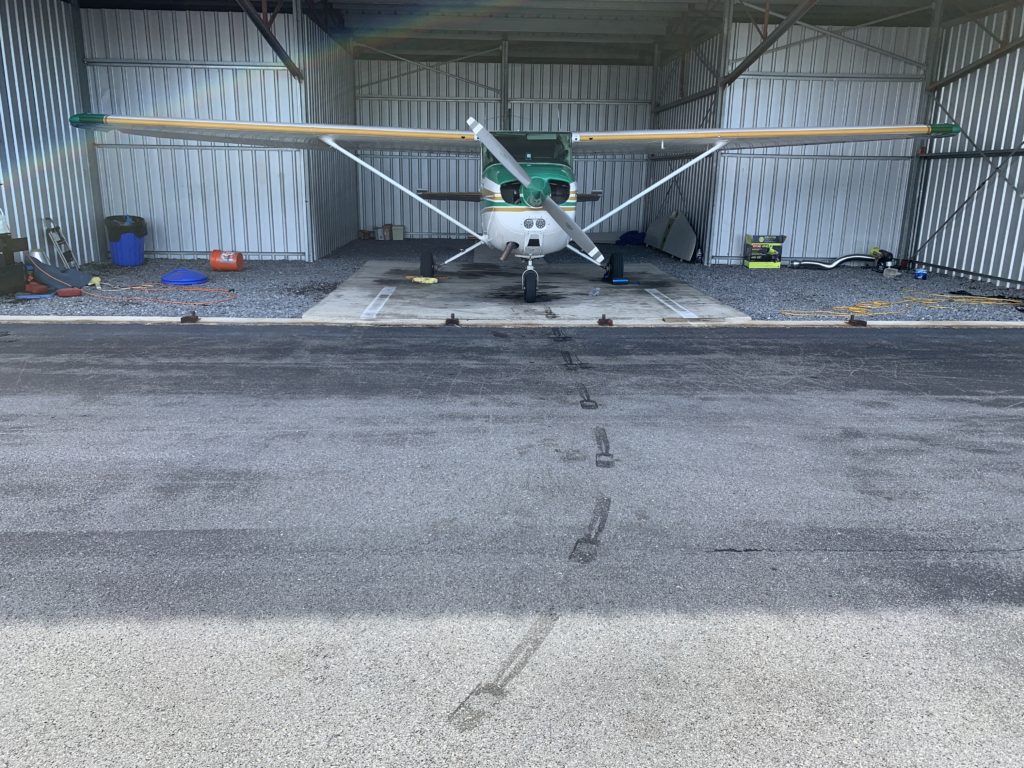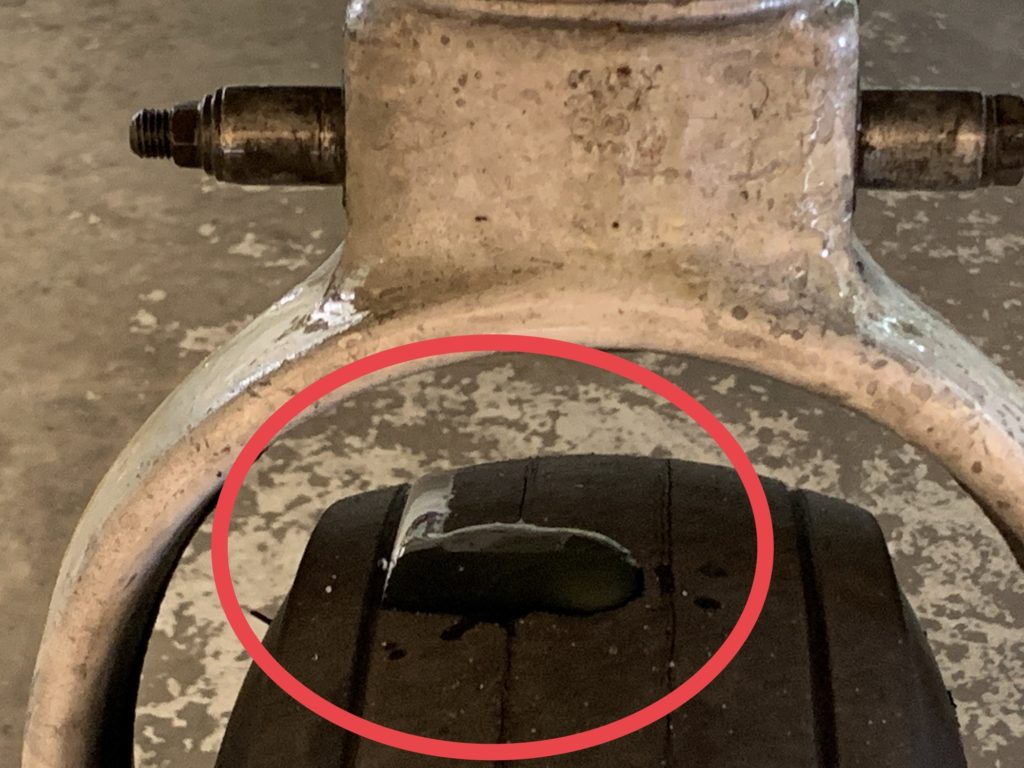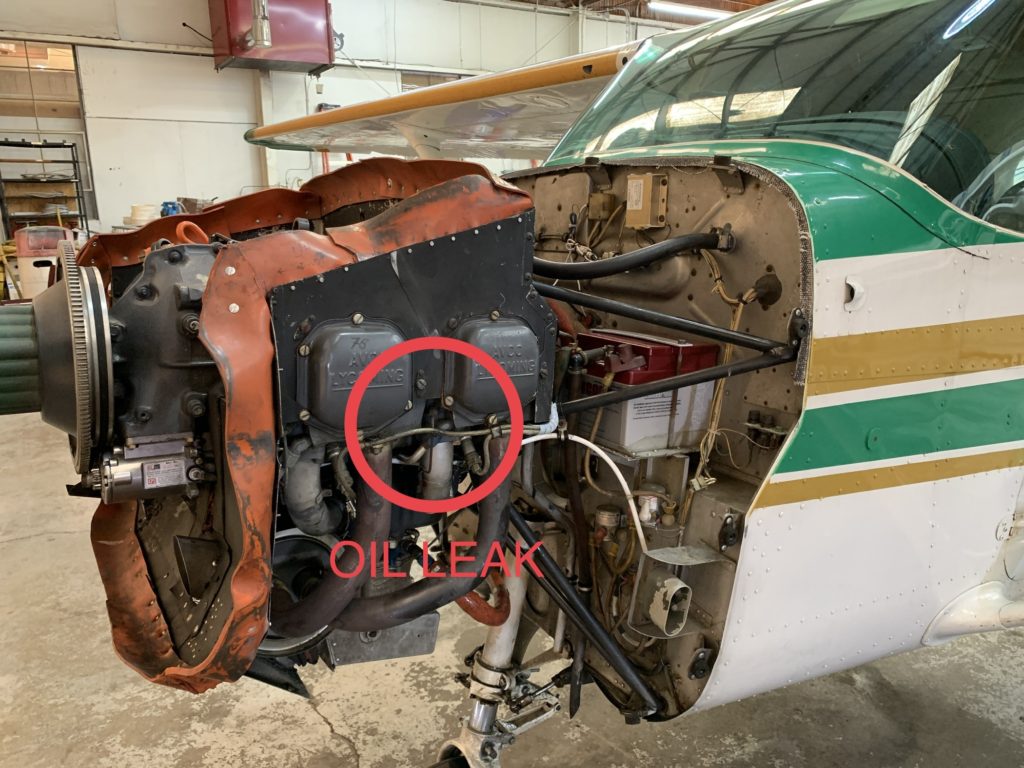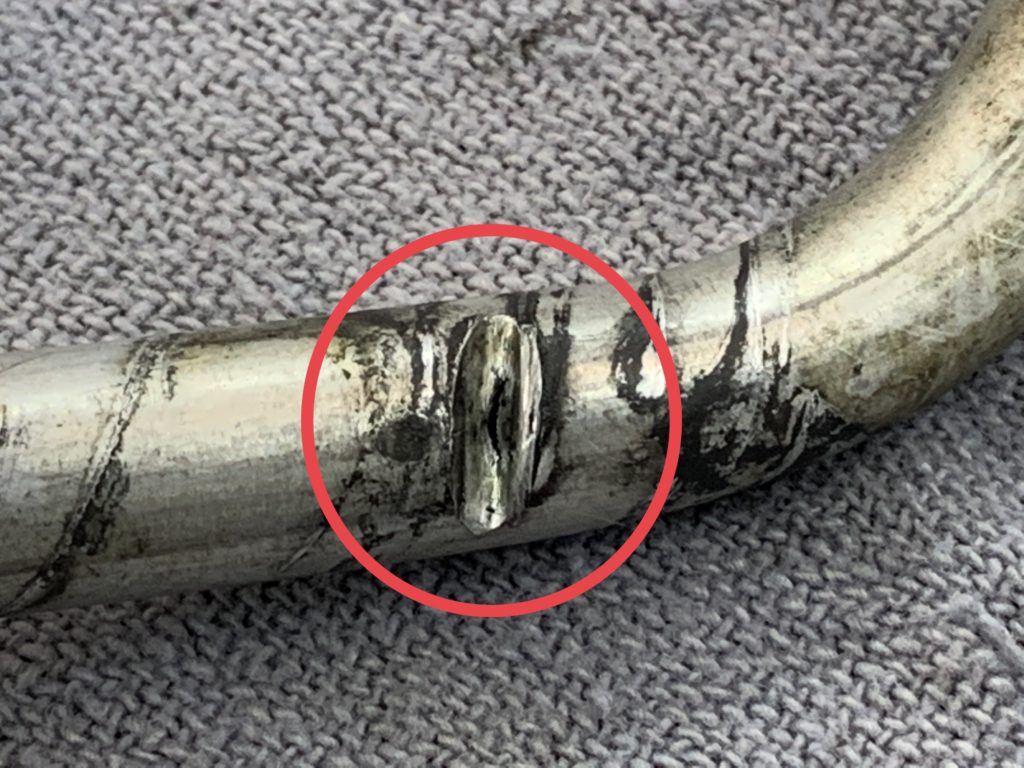Mettez-vous hors ligne avec l'application Player FM !
136 – Engine Oil Leak: How Much is Too Much?
Manage episode 272437775 series 1028900

Engine oil leaks are a common problem on small airplanes with piston engines. But how much oil leakage is too much? Here’s an indicator: If there’s oil on the nose tire, and it paints a stripe on the pavement with each revolution, that’s too much oil leakage.

This was the case the other day on a Cessna 172, so we did some detective work to see where the oil was coming from.
After removing the cowling, it was obvious the oil leak was significant, and it appeared to be coming from the left side of the engine.


Here’s what we discovered about the rocker oil return line on cylinder #4:
The wire that holds the engine baffles in place under cylinders 2 and 4, had cut a hole in the bottom of the rocker cover oil return line. When the engine is running, this line continuously returns oil from the rocker arm area back to the crankcase. With engine vibration, this is a common area for chafing to occur, and is an important area to inspect.
Here’s a closer look at the oil line after it was removed. The spiral wrap was a previous attempt to prevent chafing, but the wire still cut through the line.

After removing the spiral wrap, the chafed area was clear:


It doesn’t take a very large hole to make a big oil mess!

This story reminds me of some helpful principles for evaluating engine oil leaks:
- If engine oil is dripping on the nosewheel, it’s probably not normal and needs to be checked.
- If something changes, check it out. Example: engine breather tubes sometimes drip after shutdown, but if you notice a dramatic increase, make a further investigation.
- When troubleshooting oil leaks, go to the highest point on the engine where you see oil. Oil can run down on lower components and lead to wrong conclusions about the source of the oil leak.
- Verify all connections and fittings are tight.
Listen to the audio in today’s episode to hear about some other loose fittings that recently caused problems… one on a Piper Turbo Arrow, and one on a Piper Saratoga.
152 episodes
Manage episode 272437775 series 1028900

Engine oil leaks are a common problem on small airplanes with piston engines. But how much oil leakage is too much? Here’s an indicator: If there’s oil on the nose tire, and it paints a stripe on the pavement with each revolution, that’s too much oil leakage.

This was the case the other day on a Cessna 172, so we did some detective work to see where the oil was coming from.
After removing the cowling, it was obvious the oil leak was significant, and it appeared to be coming from the left side of the engine.


Here’s what we discovered about the rocker oil return line on cylinder #4:
The wire that holds the engine baffles in place under cylinders 2 and 4, had cut a hole in the bottom of the rocker cover oil return line. When the engine is running, this line continuously returns oil from the rocker arm area back to the crankcase. With engine vibration, this is a common area for chafing to occur, and is an important area to inspect.
Here’s a closer look at the oil line after it was removed. The spiral wrap was a previous attempt to prevent chafing, but the wire still cut through the line.

After removing the spiral wrap, the chafed area was clear:


It doesn’t take a very large hole to make a big oil mess!

This story reminds me of some helpful principles for evaluating engine oil leaks:
- If engine oil is dripping on the nosewheel, it’s probably not normal and needs to be checked.
- If something changes, check it out. Example: engine breather tubes sometimes drip after shutdown, but if you notice a dramatic increase, make a further investigation.
- When troubleshooting oil leaks, go to the highest point on the engine where you see oil. Oil can run down on lower components and lead to wrong conclusions about the source of the oil leak.
- Verify all connections and fittings are tight.
Listen to the audio in today’s episode to hear about some other loose fittings that recently caused problems… one on a Piper Turbo Arrow, and one on a Piper Saratoga.
152 episodes
Tous les épisodes
×Bienvenue sur Lecteur FM!
Lecteur FM recherche sur Internet des podcasts de haute qualité que vous pourrez apprécier dès maintenant. C'est la meilleure application de podcast et fonctionne sur Android, iPhone et le Web. Inscrivez-vous pour synchroniser les abonnements sur tous les appareils.




